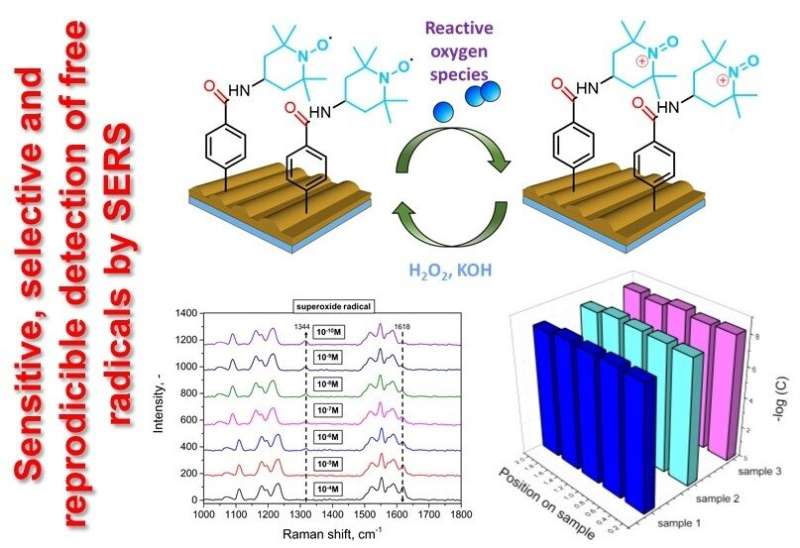Scientists create sensors with traps for free radicals

Scientists of Tomsk Polytechnic University and partners from the Czech Republic and France have designed extremely sensitive sensors for free oxygen-containing radicals that are able to disrupt cell function. According to the researchers, these sensors are an alternative to traditional analytical chemical methods of analysis. The laboratory tests demonstrated that its sensitivity is higher by four orders of magnitude. This was achieved due to the effect of surface plasmon resonance in combination with "traps" of organic compounds. The results are published in Sensors and Actuators B: Chemical.
Free radicals are reactive oxygen species with a very powerful oxidizing ability. Typically, they tend to be a kind of by-product of the respiratory chain. The main free radical is the superoxide radical (O2-). It is not dangerous by itself, but in the process of chemical transformations, it easily passes into other compounds with strong oxidizing properties. They damage proteins, nucleic acids and lipids of cell membranes.
"Therefore, in medical research, it is important to detect radicals in biological objects to timely identify incipient changes in organs, tissues and take appropriate measures. Our sensors differ from others by the action, based on the effect of surface plasmon resonance," says Olga Guselnikova, engineer at the TPU Research School of Chemistry & Applied Biomedical Sciences.
The sensors are an example of a hybrid material that combines inorganic and organic elements. Their base is a thin gold plate with a wavy surface. Organic compounds that are planted on it act as traps for free radicals. The wavy surface of the plate effectively excites the effect of surface plasmon resonance. It makes the sensors extremely sensitive due to the effect of giant Raman scattering.
"The organic component is a compound with a short name TEMPO. It is a simple and affordable model compound used in other methods, but it has never been combined with plasmon-active substrates. This combination of plasmon effect and chemical characteristics of TEMPO gave us the expected effect," the scientist explains.
In the future, the researchers intend to use the sensors to detect nitrogen-containing and halogen-free free radicals and conduct experiments closer to real biological objects. "In the Czech Republic, we are also negotiating with representatives of the food industry. After all, free radicals are markers of the fact that products, particularly meat, have deteriorated or are close to this. We want to test our sensors on food," Olga Guselnikova says.
More information: O. Guselnikova et al. Beyond common analytical limits of radicals detection using the functional SERS substrates, Sensors and Actuators B: Chemical (2019). DOI: 10.1016/j.snb.2019.127015
Provided by Tomsk Polytechnic University




















